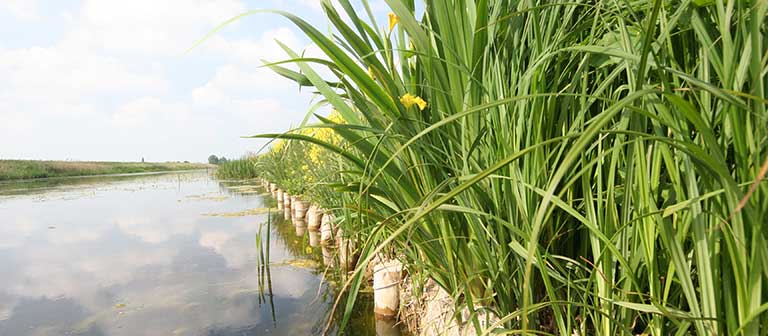Setting the record straight: Monbiot on Internal Drainage Boards

This letter has been sent to The Guardian newspaper in response to an article by George Monbiot about flooding.
Dear Editor,
I refer to your Opinion article on Flooding by Mr Monbiot published on 11 February and was very disappointed at the wrongly informed description Mr Monbiot used in describing the vital role and work of our Internal Drainage Boards (IDBs) in managing water when it reaches the lowest parts of our catchments.
Contrary to what the article claims, IDBs generally operate at the bottom end of our river catchment areas and very much support better upper catchment management and natural flood management measures to reduce run-off to lower parts of the catchment which they help manage. That management focuses on the correct and indivisible balance of the needs of the environment, local economy and people, with added emphasis on reducing flood risk and carefully providing water to agricultural areas in times of its scarcity.
Mr Monbiot is also wrong to claim that that IDBs don’t appear to be answerable to any government department. IDBs are defined as a Risk Management Authority under the Flood & Water Management Act 2010. Effectively acting as small local authorities, they are accountable bodies which undertake their flood risk management functions in line with England’s National Flood & Coastal Erosion Risk Management Strategy, and are scrutinised by local authority committees, as well as being overseen and reporting annually to Defra. Yes, the predecessors of IDBs were originally formed by groups of landowners interested in managing water for their interests and benefit as far back as the 13th Century, but today IDBs are highly efficient and democratic, operating for the wider public benefit of an area set out in legislation.
Indeed, as a result of the work they carry out and their environmental stewardship of our water corridors, people are demanding that IDBs be allowed to increase their area of activities where other authorities are unable to justify looking after our rivers. As I said previously, IDBs support the concepts of NFM at the top ends of our river catchments but lower down the catchment where there is the complex interface between people and economic activity, infrastructure, etc, our rivers and waterways need careful management using a variety of water management tools and they are very well placed, skilled and equipped to do that.
Our IDBs are proud of the work they do for the wider public and environmental good and they are greatly energised by the general levels of increasing support being demonstrated for the vital role they play in the community.
Yours faithfully,
J Innes Thomson BSc CEng FICE
ADA Chief Executive
Archive
- July 2025
- June 2025
- March 2025
- February 2025
- January 2025
- December 2024
- November 2024
- October 2024
- September 2024
- August 2024
- July 2024
- June 2024
- May 2024
- April 2024
- March 2024
- January 2024
- December 2023
- November 2023
- October 2023
- September 2023
- August 2023
- July 2023
- June 2023
- May 2023
- April 2023
- March 2023
- February 2023
- January 2023
- December 2022
- September 2022
- August 2022
- July 2022
- June 2022
- May 2022
- April 2022
- March 2022
- February 2022
- January 2022
- December 2021
- November 2021
- September 2021
- July 2021
- May 2021
- March 2021
- February 2021
- January 2021
- December 2020
- November 2020
- October 2020
- September 2020
- August 2020
- July 2020
- May 2020
- April 2020
- March 2020
- February 2020
- January 2020
- December 2019
- November 2019
- October 2019
- September 2019
- August 2019
- July 2019
- June 2019
- May 2019
- April 2019
- March 2019
- February 2019
- January 2019
- December 2018
- November 2018
- October 2018
- September 2018
- August 2018
- July 2018
- June 2018
- May 2018
- April 2018
- March 2018
- February 2018
- January 2018
- December 2017
- November 2017
- October 2017
- September 2017
- August 2017
- July 2017
- June 2017
- May 2017
- April 2017
- March 2017
- February 2017
- January 2017
- October 2016
- September 2016
- August 2016
- July 2016
- June 2016
- May 2016
- April 2016
- March 2016
- January 2016
